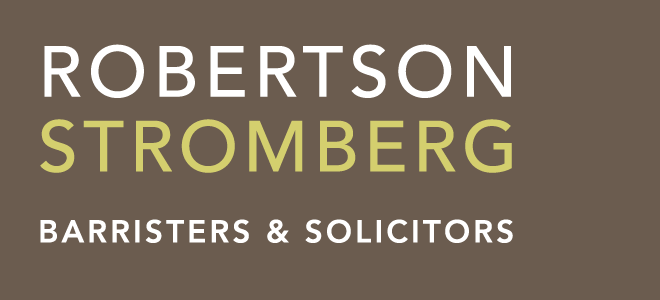The recent Saskatchewan King’s Bench decision in Gibb Estate (Re), is an example of the Court’s ability to render a document effective as a testamentary document, even if said document was executed without all the formal requirements of the Wills Act, 1996.
Factual background:
- This matter concerned the Estate of William George Gibb (“Deceased”).
- The Deceased had died on April 28, 2022. He had left a will executed June 29, 2018 (“Will”).
- The Executrix, Leora Harlingten, from North Battleford, was one of two stepdaughters of the Deceased. The other stepdaughter was Helen Sawatsky of Saskatoon. They are named in the Will as the residual beneficiaries, to each receive an equal share of the Estate.
- Paragraph 11 of the Will referred to the Deceased’s intention to create an attachment which would speak to his wishes for certain specific gifts. The Will said:
11. I give specific gifts as are identified on attachment “A”, attached to my Last Will and Testament and such attachment is incorporated and is part of this Last Will and Testament.
- The Deceased had left two different documents as “attachments” to his Will.
- The issue before the Court was which of the two documents was the valid attachment to the Deceased’s Will, for the purpose of admitting the documents for probat
- The original document (“Original Attachment”) attached to the Will did not make any reference to any specific bequest to Jessica Shaw (“Ms. Shaw”);
- The Subsequent Attachment added a specific bequest of $20,000.00 to be given to “Jessi Shaw … the administrator of RBM the company I work for at the time of this writing.”
- In other words, the key practical difference was whether a bequest of $20,000 would go to Ms. Shaw, or not.
- Shaw provided the below evidence:
- That she had met the Deceased in early 2019 when she began working at RBM Architecture Inc. in Saskatoon where the Deceased worked. The Deceased became close to Ms. Shaw and her family, spending Christmases and special occasions together;
- That while he was dying in hospital, the Deceased asked Ms. Shaw to retrieve and keep a binder of important documents from his house, which included his will and the attachment providing the $20,000 bequest to her. As well, the binder included email exchanges between the Deceased and Adsit.
- After the Deceased’s death, Shaw handed the binder over to the Executrix. About a month later, Ms. Shaw received a letter from the Executrix’s lawyer demanding that monies the Deceased gifted to her be repaid. Ms. Shaw also learned that the Executrix was taking issue with the Deceased’s bequest to her of $20,000.
- Melissa Widger (“Widger”), the daughter of the Deceased’s step-daughter, Helen Sawatsky, filed an affidavit in support of Ms. Shaw’s position. Widger recounted that the Executrix contacted her on March 27, 2022, to advise that the Deceased was diagnosed with cancer. The Executrix also told Widger that she was concerned that the Deceased had appointed Shaw his power of attorney and that he had changed his will.
- The Deceased had also sent a November 23, 2020 email to his lawyer, Ms. Adsit, saying the below:
Hi Marilyn
Hope you are keeping safe.
Our entire office is working from home.
A definite different way to live.
I have attached a revised list to be attached to my will.
I have added Jessi to receive cash.
Please indicate receipt of this e‑mail.
If you have any questions call or e‑mail.
Thank‑you
William George Gibb
Issue:
The issue was whether the Subsequent Attachment complied with s. 37 of the Wills Act, 1996, and should be given effect to as a testamentary instrument. If such document was a valid testamentary instrument, then the gift of $20,000 would go to Ms. Shaw.
Findings by the Court:
- Was the Subsequent Attachment testamentary under s. 37?
Under s. 37 of the Wills Act, 1996, a court has the power to hold that a document that was not executed with all due formalities, is still valid if it embodies the testamentary intention of the deceased:
37 The court may, notwithstanding that a document or writing was not executed in compliance with all the formal requirements imposed by this Act, order that the document or writing be fully effective as though it had been properly executed as the will of the deceased or as the revocation, alteration or revival of the will of the deceased or of the testamentary intention embodied in that other document, where a court, on application, is satisfied that the document or writing embodies:
-
- the testamentary intentions of a deceased; or
- the intention of a deceased to revoke, alter or revive a will of the deceased or the testamentary intentions of the deceased embodied in a document other than a will.
For a document to be considered testamentary under s. 27, a Court must apply the following test: Did the document represent the fixed and final expression of intention of the deceased, as to the disposal of their property on death?
The Court in Gibb Estate determined that the Subsequent Attachment of November 23, 2020 was indeed testamentary. It set out a deliberate expression of the Deceased’s intention to dispose of his property by including the specific bequest to Ms. Shaw. The Subsequent Attachment thus met all the criteria required by s. 37.
- Was the Subsequent Attachment actually created by the Deceased:
There was another raised by the Executrix. The Executrix submitted that Ms. Shaw had failed to prove that the Subsequent Attachment was actually made by the Deceased, and sent to Adsit from his own email account.
The Court ultimately found that the Deceased had clearly made the Subsequent Attachment. The Court noted the below facts:
- Ms. Shaw stated in her affidavit that she did not have access to the Deceased’s work email. Only the Deceased and the owner of RBM Architecture Inc. would have had access to the Deceased’s email;
- Widger’s affidavit evidence also supports the fact that it was the Deceased who sent the email to Adsit. The Deceased’s told Widger in April 2022 that he had added Shaw to his Will;
- Moreover, the Court took notice that the Executrix had the full legal right to ask Ms. Adsit, in her role as counsel for he Deceased, to provide any evidence to suggest that the Subsequent Attachment did not come from the Deceased. The Executrix did not however obtain such evidence. The Court drew an adverse inference from this absence of evidence:
[26] Adsit could have cleared up the issue as to whether she received the Subsequent Attachment from Gibb and knew it to be the document sent to her from Gibb. With no evidence filed by the Executrix on that matter, I must draw the adverse inference that the evidence on this point is clear. That is, Adsit received her instructions from Gibb. Shaw has proven on the balance of probabilities that the Subsequent Attachment setting out the specific bequest to her did indeed emanate from Gibb’s email.
Conclusion:
The Court held that Ms. Shaw had proven that the will with the Subsequent Attachment constituted the last will and testament of the Deceased to be admitted for probate.
The Court also made an order that Ms. Shaw should receive her solicitor and client costs, to cover her legal fees that she had incurred in this application. Such would be paid from the Estate assets:
[28] Shaw seeks an order that her costs of this application be paid, on a solicitor‑client basis, out of the Estate…
[29] I agree that Shaw’s costs should be awarded to her on a solicitor‑client basis. There was no dispute as to Gibb’s intention when he made the Subsequent Attachment. The Executrix’s allegation that it was not a document prepared by Gibb was completely unsupported in the evidence. Therefore, Shaw is awarded costs on a solicitor‑client basis, payable out of the Estate.
In making the above costs order, the Court referred to certain Saskatchewan case law which held that the “general rule of costs in estate litigation involving the interpretation of wills is that the parties’ costs are to be paid out of the estate.”
The practical effect of this costs order is significant. For context, the vast majority of all civil litigation in Saskatchewan, results only in partial costs orders for the winner. In other words, the winner is typically only awarded a very partial amount of costs from the other side. This means that the winner still is out of pocket to a large degree, in paying the legal fees of their own lawyers. This dilutes their final financial outcome, even if they win.
Here, the costs order above meant that Ms. Shaw would not be out of pocket for her legal fees, incurred in obtaining the ruling in her favor. It also meant that the Estate residual beneficiaries would have their residual property reduced by the amount of Ms. Shaw’s legal fees. Such costs order are still relatively common in Saskatchewan estate litigation, and show the unique way in which Courts continue to approach costs orders in estate litigation, as compared to general civil litigation.

